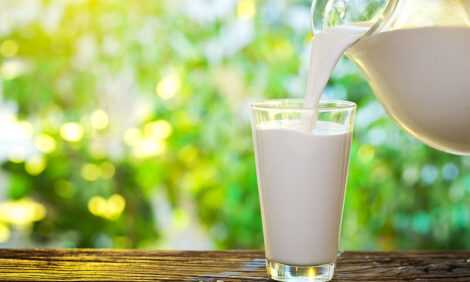



Red Clover Makes Cows Milk
Cows prefer silage containing red clover, which also boosts their milk production.The dissertation study conducted at MTT Agrifood Research in Finland also discovered that silage made from grass in late summer is no comparison for the same silage made in early summer.
Due to its challenging cultivation and preservation compared to grass plants, an estimated one fifth of the silage used by farms contains red clover.
Research Scientist Kaisa Kuoppala from MTT says that the use of red clover as raw material for silage should be increased significantly.
"Red clover in silage has often increased feed intake and milk production in particular," Ms Kuoppala said.
Harvesting Date Affects Silage Quality
In her dissertation Ms Kuoppala examined the differences in the intake by cows of silage harvested at various stages of growth and their effects on their nutrient intake and milk production.
Milk content and silage digestibility were also analysed.
The research scientist examined primary growth red clover and regrowth grass, which she compared with primary growth grass.
"The effect of the harvesting date on the primary growth grass has been widely studied in Finland, but regrowth has been subject to much less examination. Yet nearly half of silage comes from regrowth grass.
The effect of red clover harvesting date has also received little attention in previous studies," the doctoral candidate said.
Energy in Clover Used Effectively
The study showed that red clover is highly recommendable as raw material for silage. Kuoppala noted that cows are able to use effectively the energy contained in clover.
"Cows consumed smaller amounts of primary growth red clover compared to other silages, but their milk production remained at the same level. Less silage thus produced more milk," she said.
According to Kuoppala the decrease in digestibility with the delaying of harvesting did not have an equally systematic impact for red clover silage than it did for grass silage.
"The D value indicating the digestibility of red clover silage does not forecast intake or milk production as clearly as has been discovered with grass plants. Further study would be needed to establish the effect of the growth stage," the doctoral candidate added.
Regrowth Grass Silage Not So Palatable
The study showed that cows preferred primary growth grass silage over regrowth grass silage, even though the digestibility of both silages in the experiments was equally good. Cows also produced less milk after consuming regrowth grass silage than after consuming primary growth grass silage.
Ms Kuoppala thinks that the difference between the intake of primary and regrowth grass may be that regrowth grass is plagued by plant diseases, weeds and dead, deteriorating material more than primary growth grass.
"Cows apparently prefer the taste of primary growth grass silage over that of regrowth silage. If possible, the high-quality silage made from primary growth grass should be given to cows producing a great deal of milk, and regrowth grass silage reserved for non-milking cows and young cattle," she said.
The doctoral dissertation of Kaisa Kuoppala, M.Sc. (Agriculture and Forestry), in the field of animal nutrition, entitled "Influence of harvesting strategy on nutrient supply and production of dairy cows consuming diets based on grass and red clover silage", will be examined at the Faculty of Agriculture and Forestry of the University of Helsinki on 17 September 2010.
The opponent will be director of research Jan Bertilsson from the Swedish University of Agricultural Sciences (SLU), with Professor Matti Näsi from the University of Helsinki as custodian.
September 2010


